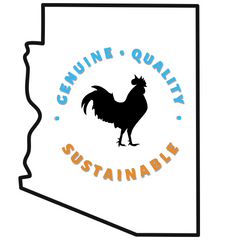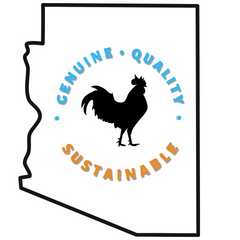Buy Baby Chicks: A First-Time Owner’s Complete Guide (Hot-Climate Edition)
Buy Baby Chicks: A First-Time Owner’s Complete Guide (Hot-Climate Edition)
Bringing home your first baby chicks is exciting—and a little intimidating. If you live in a hot, arid region, success depends on choosing heat-hardy breeds, buying from a source that ships responsibly, and setting up a brooder that keeps chicks safe, hydrated, and steadily growing. This guide walks you through every decision: when to buy, how to pick breeds for hot climates, what healthy day-old chicks look like, the exact first-week setup, and common mistakes to avoid. Throughout, you’ll find expert resources from Az Chickens, a hot-climate specialist with educational articles, a live chick arrival guarantee, and year-round online ordering.
Key Takeaways / Summary
- Where to buy: Choose a reputable seller with a live-arrival guarantee and responsible shipping. Az Chickens highlights free shipping and a live chick arrival guarantee—see details on their site.
- Heat-hardy breeds: In hot climates, prioritize Mediterranean and active foraging types. Start with the Az Chickens articles on Heat-Resistant Chicken Breeds 2025 and the regional guide Buy Heat Hardy Chickens Southwest 2025.
- Healthy chick checklist on arrival: Bright eyes, alert posture, steady breathing, clean nostrils and vent, full but not bloated crop, strong legs and balanced stance.
- Essential first-week setup: Draft-free brooder, verified thermometer at chick height, safe heat source, abundant cool water (refresh often in heat), high-protein starter feed, and dry bedding.
- Hot-climate brooder tweaks: Extra ventilation and lower heat output than in cold climates, multiple watering stations, rehydration support on day one, and shade management if brooding in a garage or shed.
- Timing: Avoid the hottest shipping weeks when possible; use “Hold for Pickup” at your Post Office to reduce transit heat stress.
- Medicated vs. non-medicated feed: Decide based on local coccidia pressure; review Az Chickens’ Health & Nutrition guidance and your veterinary advice.
- First-week care rhythm: Teach drinking immediately, dip beaks, monitor temps twice daily, spot-clean bedding daily, and observe behavior as your most accurate “thermostat.”
- Scaling up: Plan brooder space now so birds don’t overheat as they grow; move to a well-shaded, ventilated coop as soon as they are fully feathered and overnight lows are safe.
- Go deeper with Az Chickens: Start at the Chick Care hub, then read Chick Care Tips, Southern Climate Housing Solutions, and Marek’s Disease in Arizona.
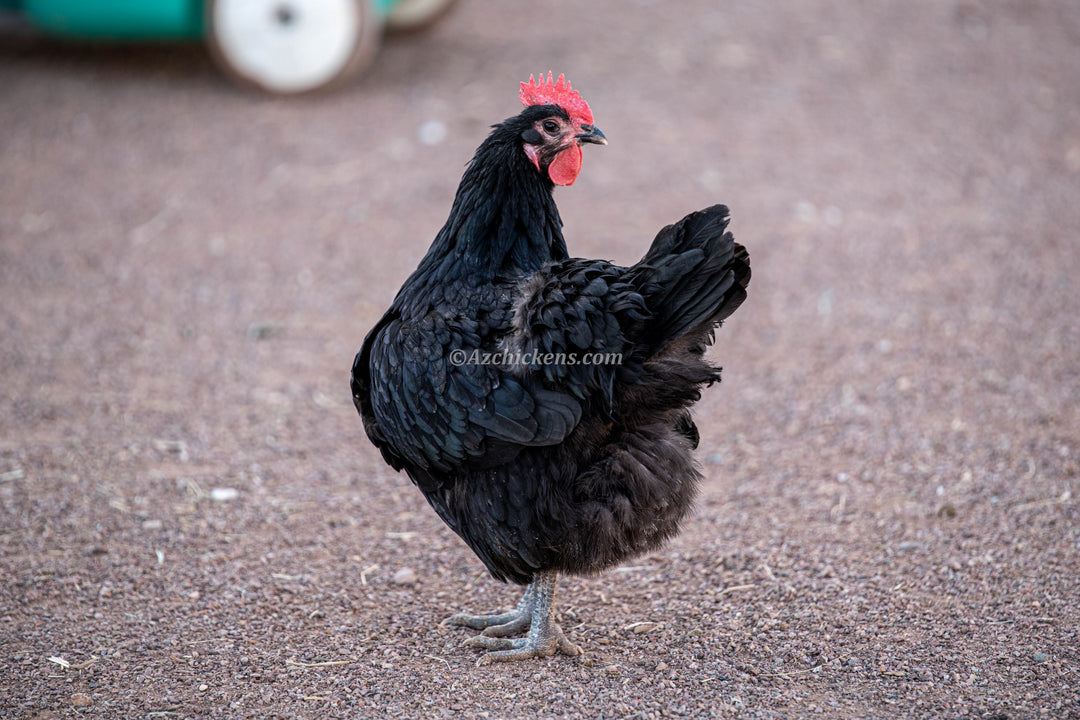
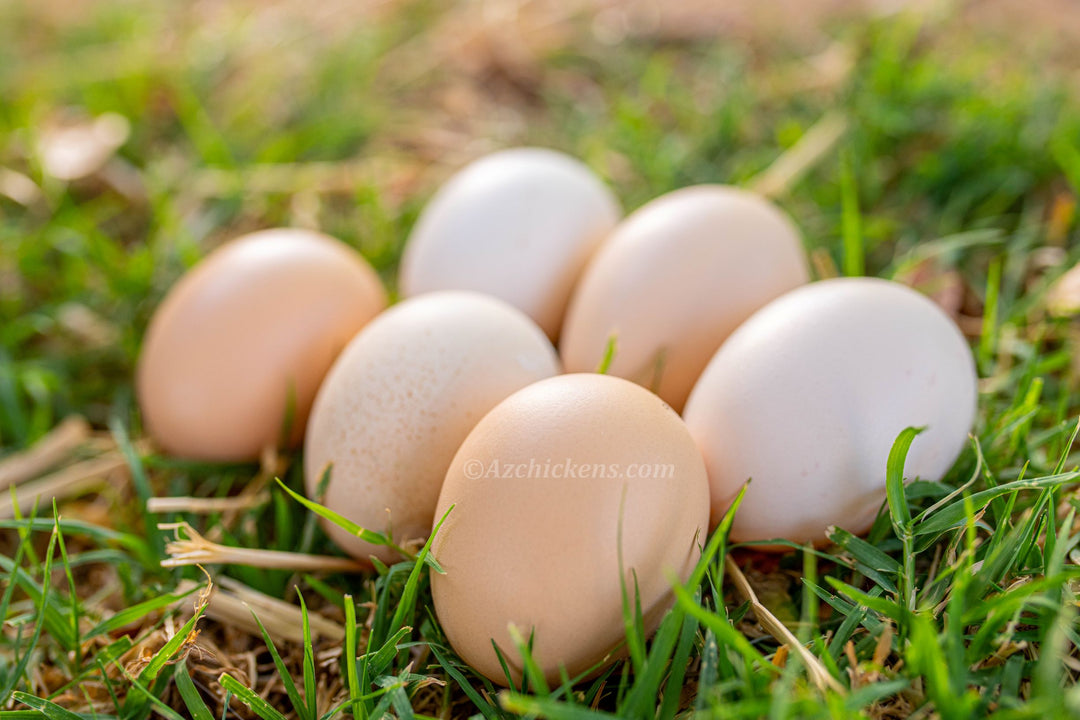
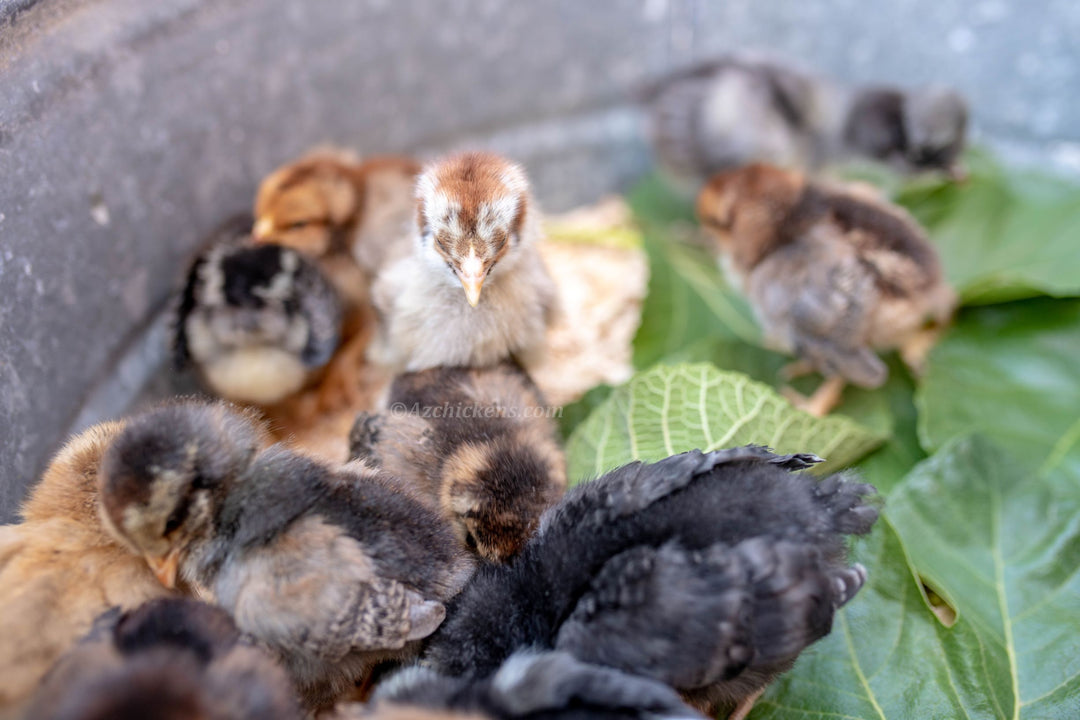
1) Where to Buy Baby Chicks (and How to Vet a Seller)
First-time owners in hot climates should prioritize hatcheries and sellers with a proven shipping process and a live-arrival guarantee. Az Chickens emphasizes free shipping and a live chick arrival guarantee on qualifying orders—details can change, so review current terms on their site. “Hold for Pickup” at your local Post Office often reduces transit heat exposure and is a smart request during warm months.
- Look for proactive communication on ship dates and weather holds.
- Ask about packing: how chicks are boxed, hydration gel use, and ventilation.
- Check educational depth: sellers who publish detailed care guides—like the Az Chickens Chick Care hub—tend to support customers well after purchase.
- Verify health standards (vaccination options, clean facility practices).
Arrival-day checklist: Open the box in a warm, quiet room; count chicks; note any concerns; take clear photos if something seems off; and contact the seller promptly per their live-arrival terms. Then move chicks to the pre-warmed brooder and teach drinking right away.
If you’re considering started pullets or adults instead of day-old chicks, review Az Chickens’ overview: Chicken Adults, Juveniles, Chicks & Hatching Eggs For Sale.
2) Picking Breeds for Heat: Start with the Right Genetics
In sustained triple-digit heat, breed choice makes or breaks success. Mediterranean and active foragers typically carry sleeker bodies and larger combs for better heat dissipation. Lighter plumage can help in full sun. Start with Az Chickens’ research-backed guides:
Beyond heat, match birds to your goals: reliable egg layers for family use, calm temperaments if kids are involved, or dual-purpose birds if you value meat yields. Balance mixed flocks by temperament so bolder breeds don’t crowd meeker ones off waterers in the heat.
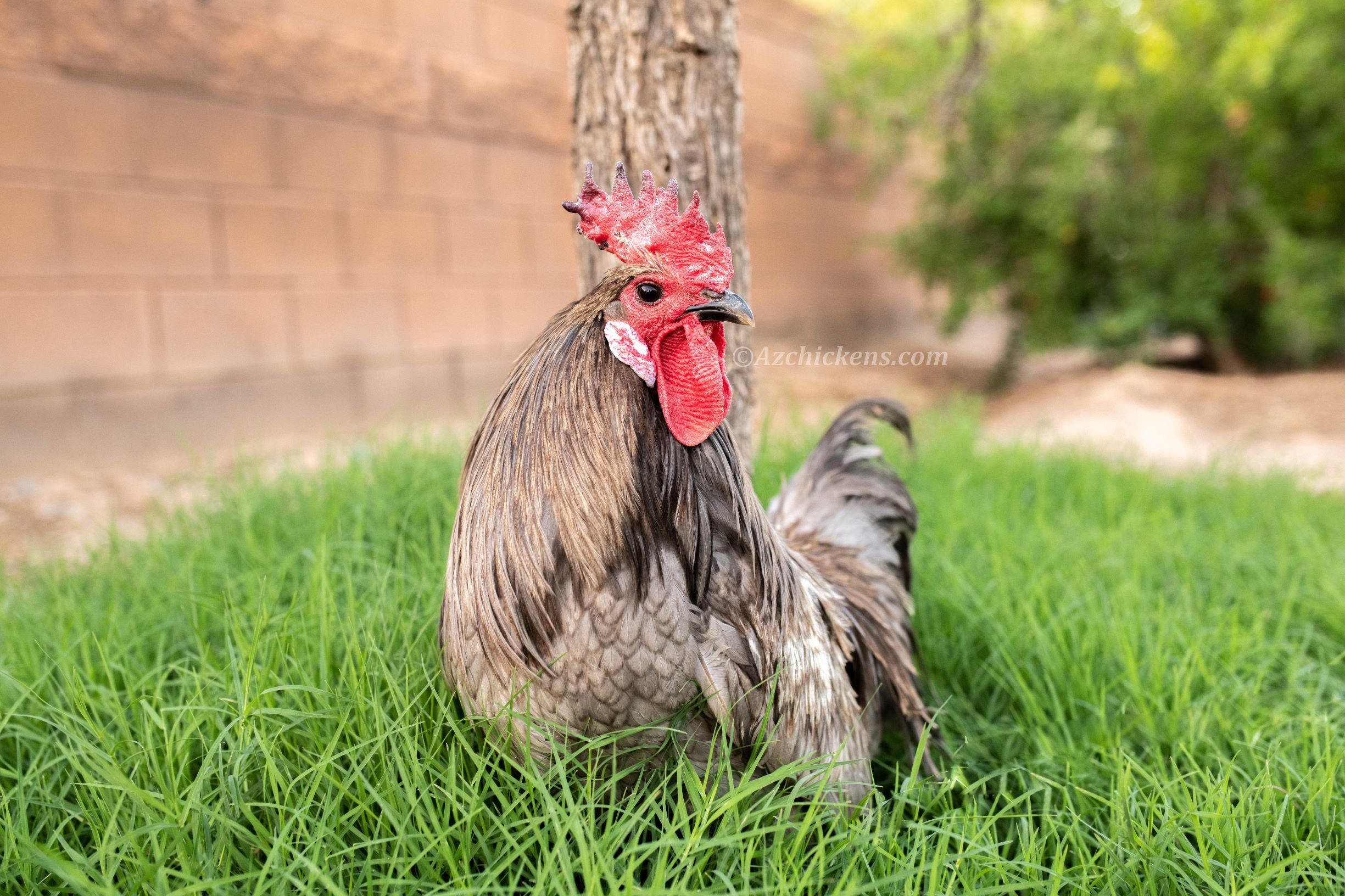
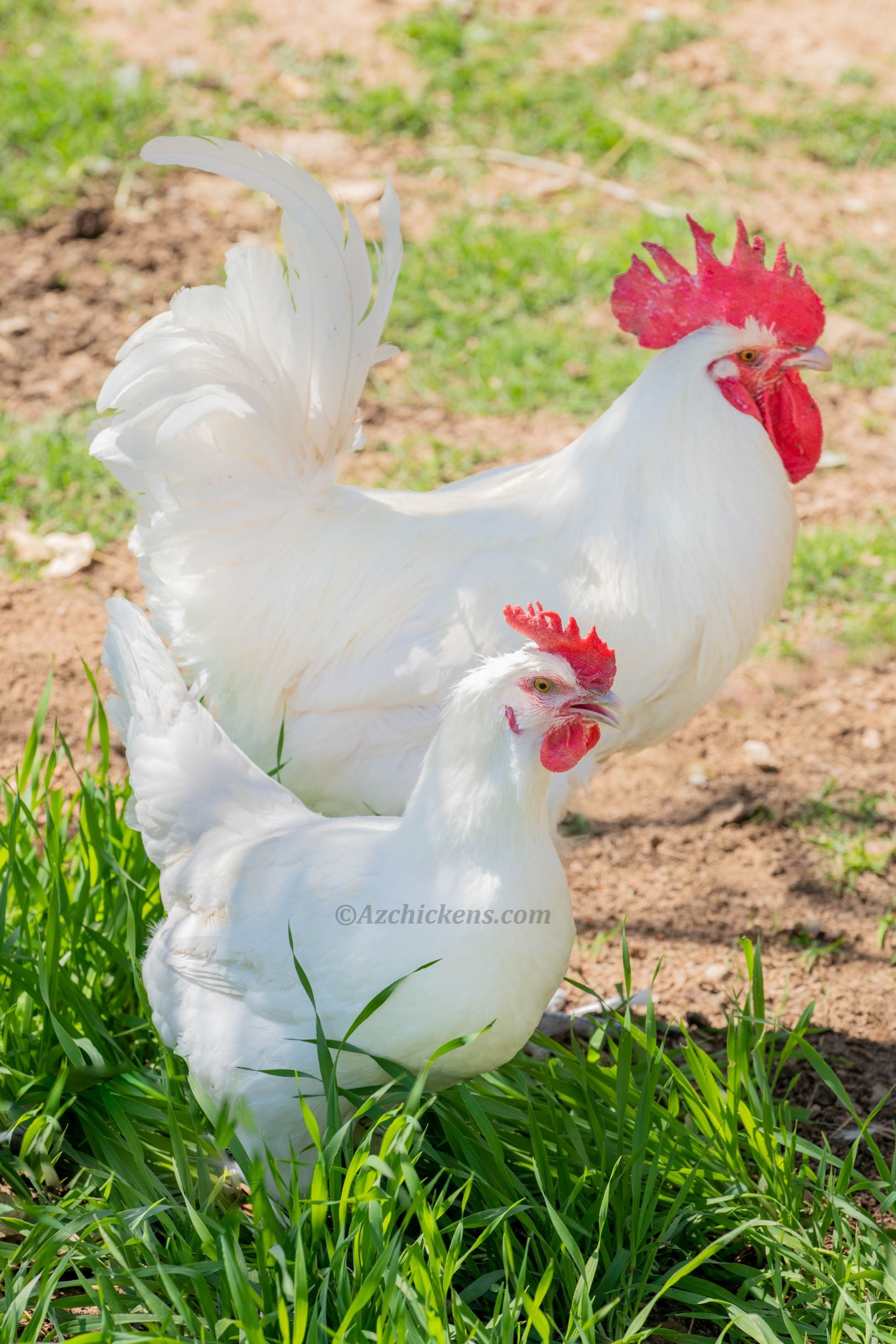
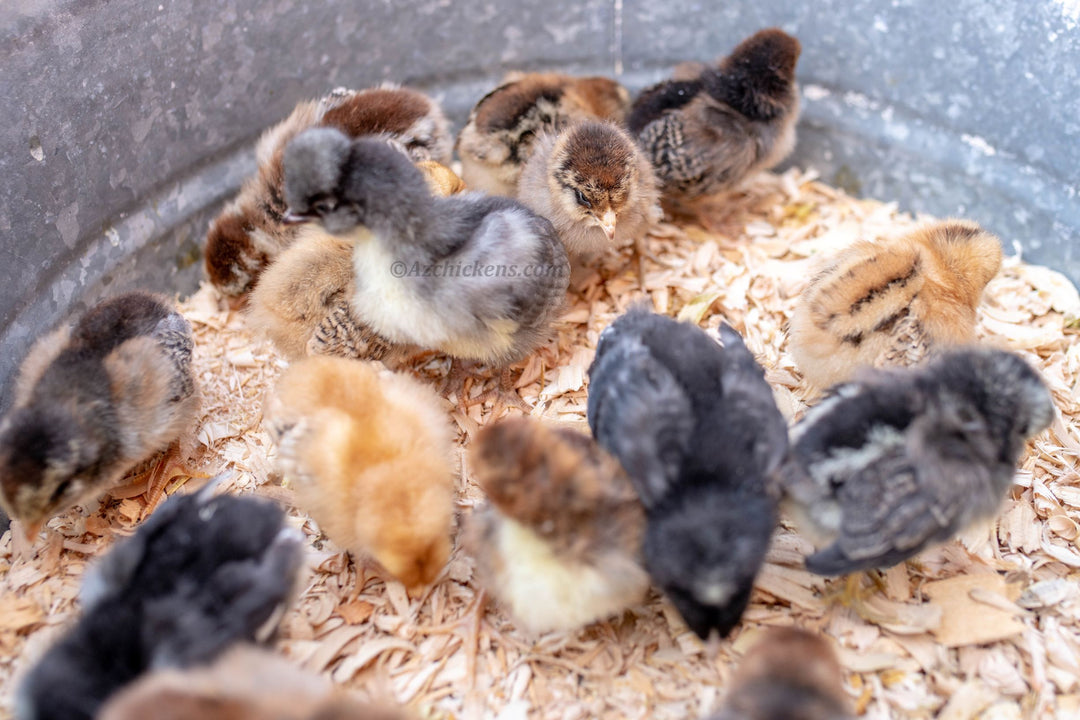
3) When to Buy (Hot-Climate Timing)
Shipments in the hottest weeks raise risk. If possible, aim for shoulder seasons when daytime highs are lower, or work with the seller to select a cooler window. Use “Hold for Pickup” to keep boxes in a climate-controlled post facility rather than on a delivery truck. Call your Post Office the day before arrival so they know to notify you. Once chicks arrive, move them into your pre-warmed brooder immediately and teach them to drink (dip beaks in lukewarm water).
If you’re hatching your own instead, Az Chickens’ Hatching Egg Tips walk through incubation basics and quality control in warm regions.


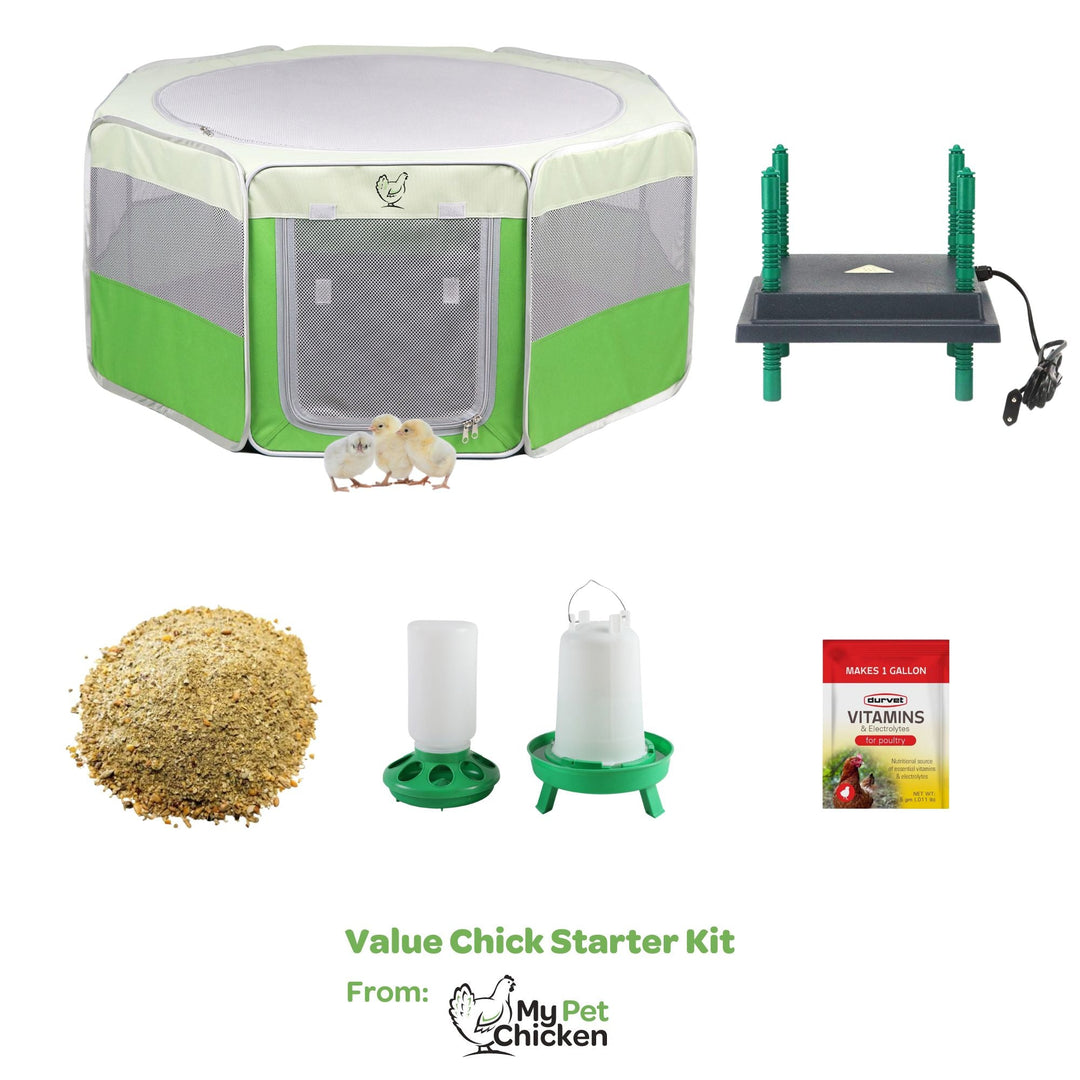
4) What Healthy New Chicks Look Like on Arrival
- Eyes open and bright; head carriage alert.
- Clean nostrils and vent (no pasted or wet feathers).
- Even, quiet breathing; no gaping or wheezing.
- Responsive to sound and movement; steady on legs.
- Crop comfortably full after first drink/meal, not hard or distended.
Gently rehydrate immediately. On day 1, offer lukewarm water refreshed frequently; in heat, water temperature matters as chicks won’t drink enough if it’s hot. If any chick seems slow, teach it to drink again and verify brooder temperature at chick height with a reliable thermometer. For the first 24–48 hours, add clean marbles or small pebbles to shallow waterers to prevent accidental dunking.
5) Your First-Week Brooder Setup (Hot-Climate Specifics)
Create a draft-free, escape-proof enclosure with a warm side and a cooler side so chicks can self-regulate. In hot climates:
- Start at typical chick targets but reduce heat faster if room temps are high. Aim for about 95°F (35°C) at the warmest spot on days 1–2, then drop roughly 5°F per week—adjust by behavior.
- Use a large-footprint brooder for better airflow and clear warm/cool zones.
- Provide multiple watering points to reduce crowding and ensure timid chicks drink.
- Place the brooder out of direct sun; garages and sheds can overheat—check ambient temperature morning and late afternoon.
- Heat source safety: Radiant heat plates or well-secured, guarded lamps reduce fire risk. Never point a heat lamp at plastic or bedding; use a clamp and safety chain.
Bedding should be dry and grippy (pine shavings or textured paper towels for the first few days). Swap any wet spots daily; in heat, damp bedding grows bacteria quickly. Review Az Chickens’ Chick Care Tips for step-by-step routines.
Quick temperature gauge by behavior: Huddling = too cool; chicks spread to edges and panting = too hot; relaxed milling and soft peeping = just right.
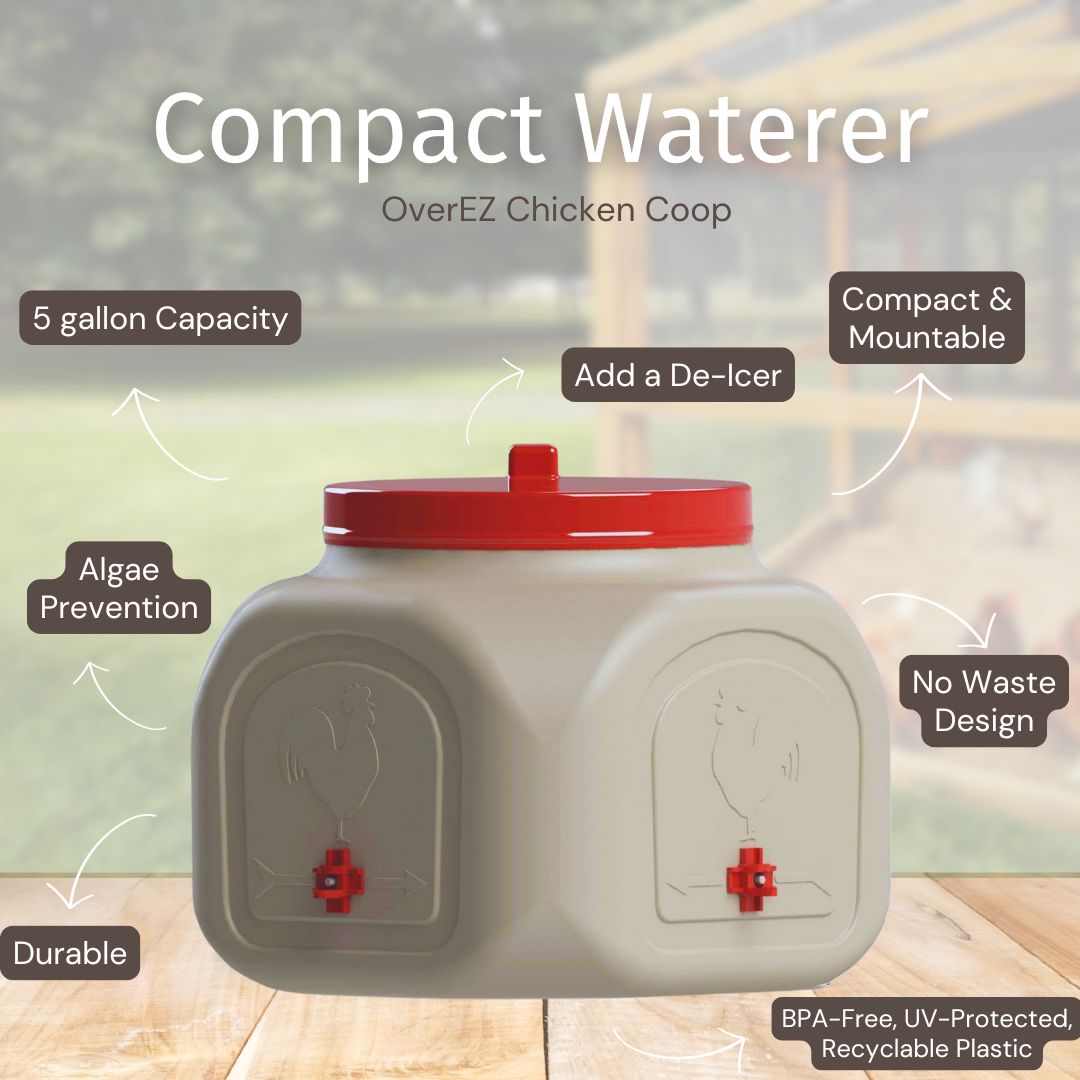
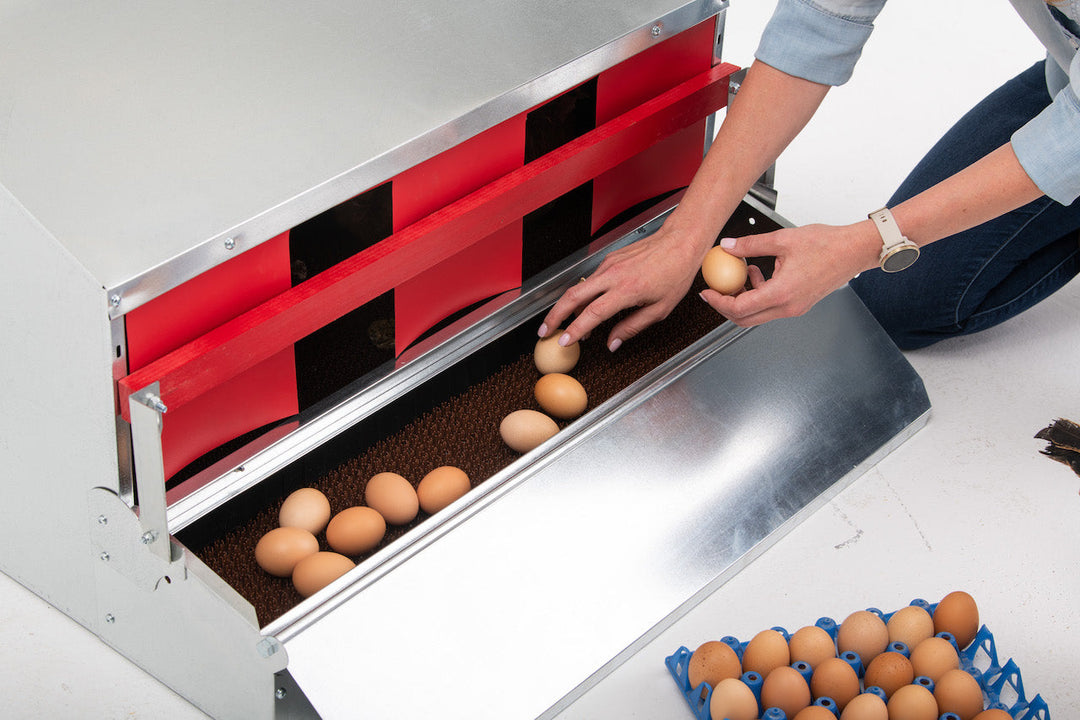

6) Feed and Hydration in Week One
- Feed: A high-protein chick starter is standard; decide medicated vs. non-medicated with your local conditions in mind. Medicated starter (typically amprolium) helps prevent coccidiosis exposure and is not an antibiotic. See Az Chickens’ Health & Nutrition notes for regional considerations.
- Water: Provide constant access; refresh to keep it cool and clean. Position waterers away from the heat source to avoid warming.
- Additions: Some owners offer an electrolyte/vitamin solution for day 1 rehydration and during heat spikes; follow label guidance and limit routine use to short periods.
- Grit: Not needed until you introduce treats; when you do, add chick-sized grit.
7) Health Safeguards (Hot-Region Awareness)
Heat stress can mimic other issues—panting, wings held out, lethargy. Offer immediate shade, cooler water, and reduce brooder heat if chicks cluster far from the heat source. For disease prevention planning—notably Marek’s and coccidiosis—start with local veterinary advice and Az Chickens’ regional article: Marek’s Disease - Chickens in Arizona.
Biosecurity basics: Wash hands before/after handling chicks, keep the brooder away from adult birds, and sanitize feeders and waterers regularly. If adding new birds later, quarantine them before mixing.
8) Essential Supplies Checklist
- Brooder enclosure with a secure lid (draft-free, well-ventilated).
- Heat source with adjustable height or output.
- Reliable thermometer at chick height (a second one for cross-checking helps).
- Chick feeders and multiple waterers (sanitary, tip-resistant).
- Bedding: pine shavings or textured liners; never slick surfaces.
- Starter feed (medicated or non-medicated).
- Electrolyte/vitamin option for day 1 and heat spikes.
- Paper towels for the first 24–48 hours to teach eating behavior.
- Spare power plan (power outage heat contingency).
For setup ideas and upgrades, browse Az Chickens resources: Chick Care, Southern Climate Housing Solutions, and Health & Nutrition. Also see their guide for new keepers: Buy Beginner Chicken Starter Kit: The Complete Guide.



9) Day-by-Day: Your First Week Plan
- Day 0–1: Pre-warm brooder. On arrival, dip beaks to teach drinking; observe each chick drinking and swallowing. Offer feed within 30 minutes. Confirm temperature and chick behavior (evenly distributed).
- Day 2–3: Spot-clean bedding daily; monitor for pasted vents and clear with warm water if needed. Ensure no crowding at heat or water.
- Day 4–5: Begin gentle handling; continue temperature checks morning and late afternoon (heat spikes). Add a second or larger waterer if they’re draining it quickly.
- Day 6–7: If room temperatures run warm, you can often reduce supplemental heat compared with cold-climate schedules (watch behavior: panting or huddling are red flags).
Use behavior as your thermostat. Even well-placed thermometers don’t beat the chicks’ feedback: huddling means cold; spread to edges and panting means too hot; relaxed milling around the feeder is just right.
10) Common First-Timer Mistakes (and Easy Fixes)
- Overheating the brooder in already-warm rooms: Increase floor space and airflow, and lower heat output.
- Not enough water access: Add an extra waterer and refresh often; chicks won’t drink hot water.
- Slick flooring: Leads to spraddle leg; use textured paper towels first 24–48 hours, then dry shavings.
- Skipping “Hold for Pickup”: Delivery trucks get hot; Post Office hold reduces transit heat stress.
- Underestimating grow-out space: Crowding increases stress and slows growth; plan the coop early with shade and cross-ventilation.
- Pointing fans directly at chicks: Gentle room air movement is good; direct drafts at chick level are not.
11) Growing Out: From Brooder to Coop in Hot Regions
Move chicks out when fully feathered and nighttime lows are safe. In hot zones, daytime heat loads the coop; use shade cloth, roof overhangs, and high/low vents to create chimney effects. Add low roosts for developing balance and keep waterers in shaded, breezy spots. If integrating with older birds later, use a see-but-don’t-touch pen for a week to prevent bullying. Az Chickens’ Southern Climate Housing Solutions outlines how to design for airflow, shade, and heat management.
12) Building a Resilient Flock with Local Knowledge
Every microclimate is different. Keep notes on temperatures, water consumption, and behavior. Adjust heat and ventilation daily during heat waves. For nutrition strategy and long-term health in the Southwest, review Az Chickens’ regional articles:



FAQ for First-Time Chick Buyers
How many chicks should I start with? Four to six is a good starter group for stable social behavior and adequate body heat. In hot climates, the extra birds help create balanced pecking orders without overheating the brooder if it’s sized correctly.
Should I buy sexed chicks? If your neighborhood prohibits roosters, yes—order sexed pullets. If you can accommodate surprises, a straight-run can be economical but plan for extra housing or rehoming of cockerels.
How often do I change water in heat? As often as it takes to keep it cool to the touch and clean—expect multiple changes daily during heat waves.
What about vaccines? Many owners request Marek’s vaccination at hatch. Review local disease pressure and read Az Chickens’ Marek’s Disease guide, then decide with your seller or veterinarian.
Do I need a rooster for eggs? No—hens lay without a rooster. A rooster is only needed if you want fertile eggs for hatching.
How long do chicks need supplemental heat? Typically 4–6 weeks, decreasing weekly. In hot rooms, many chicks wean off added heat sooner—let behavior, not the calendar, guide you.
Ready to Start?
Combine the right breeds, a heat-smart brooder, and dependable water access and you’ll be well on your way. Next steps:
- Read: Chick Care Tips
- Plan housing: Southern Climate Housing Solutions
- Choose breeds: Heat-Resistant Chicken Breeds 2025
- Review buying options: Chickens for Sale Overview
- New owner primer: Beginner Chicken Starter Kit Guide
